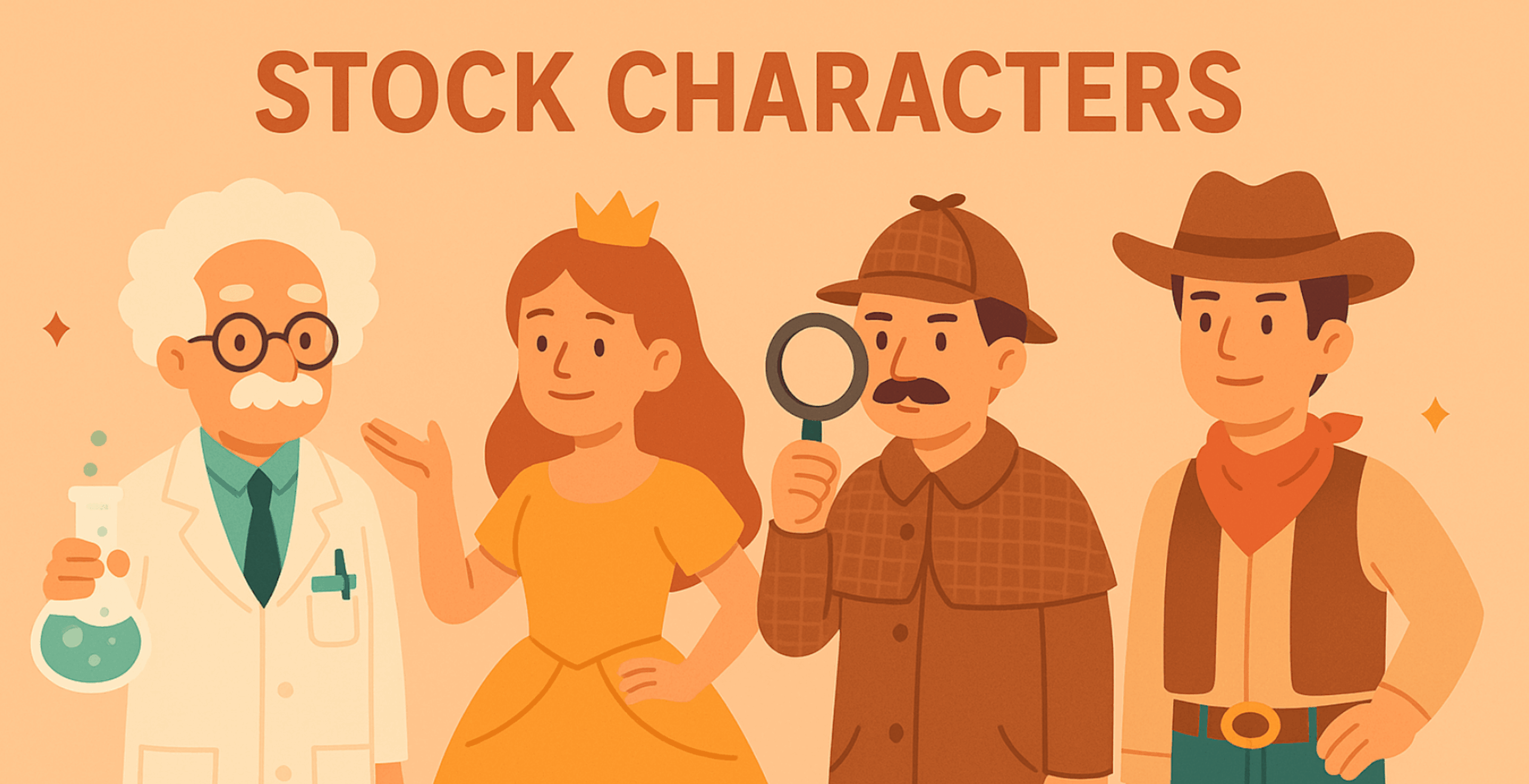Writing for the young adults genre has become a pivotal part of the literary world, capturing the hearts and minds of millions of readers globally. Young adult fiction, often referred to as YA fiction, serves as a bridge between childhood and adulthood, addressing themes that resonate deeply with young adults. This genre’s popularity is evidenced by the success of blockbuster series like “The Hunger Games” and “Harry Potter,” which have not only captivated teenage audiences but also garnered a significant adult readership.
The importance of YA fiction lies in its ability to reflect the complexities of adolescence, providing a safe space for young readers to explore identity, relationships, and personal growth. As such, writing for this genre demands a keen understanding of the unique experiences and perspectives of young adults. This article aims to equip aspiring writers with practical tips and strategies for crafting compelling YA novels. From creating relatable characters to developing engaging plots, we will delve into the key elements that make YA fiction both impactful and enjoyable. Whether you are a seasoned author or a novice writer, these insights will help you connect with young readers and leave a lasting impression on their literary journeys.
Understanding the Young Adult Fiction Genre
Young adult fiction, commonly known as YA fiction, is a genre specifically targeted towards readers aged 12 to 18. This genre encompasses a broad range of themes and styles but is unified by its focus on the challenges and experiences of adolescence. YA novels often tackle issues such as identity, personal growth, relationships, and the transition from childhood to adulthood, resonating deeply with their target audience.
One of the defining characteristics of young adult fiction is its emphasis on the protagonist’s perspective, usually a teenager or young adult. These stories are typically told through first-person or close third-person narratives, allowing readers to closely identify with the main character’s thoughts and emotions. YA novels often feature fast-paced plots, with a strong focus on character development and emotional arcs. The language used in YA fiction is accessible, engaging, and often mirrors the vernacular of contemporary teenagers.
Understanding the differences between YA fiction and other genres is crucial for writers. Middle-grade fiction, for example, is aimed at readers aged 8 to 12 and tends to feature protagonists of a similar age. Middle-grade stories usually focus on adventure and friendship, with themes appropriate for younger readers. The tone is generally lighter, and the language simpler, reflecting the developmental stage of its audience.
In contrast, adult fiction encompasses a wide range of genres and themes, often featuring more complex plots and mature content. The protagonists in adult fiction are typically older, and the narratives delve into issues and experiences beyond the teenage years. Adult fiction can explore more explicit themes and use sophisticated language that may not be suitable or relatable for younger audiences.
YA fiction, therefore, occupies a unique space in literature, bridging the gap between middle-grade and adult fiction. It addresses the specific interests and concerns of young adults, offering them stories that are both entertaining and meaningful. By understanding these distinctions, writers can effectively craft stories that resonate with their intended audience, ensuring that their YA novels capture the essence of adolescence and the journey toward adulthood.
Identifying Your Target Audience
Understanding the demographics of young adult (YA) readers is crucial for any writer aiming to succeed in this genre. YA fiction primarily targets readers aged 12 to 18, a period often referred to as the teenage years. However, the appeal of YA novels extends beyond this age range, attracting both younger readers transitioning from middle-grade fiction and older readers, including adults, who appreciate the genre’s vibrant storytelling and emotional depth.
Key interests and concerns of teenagers are central to crafting compelling YA fiction. Adolescence is a time of significant personal and social development, marked by the search for identity, the desire for independence, and the navigation of complex relationships. Themes such as friendship, love, family dynamics, self-discovery, and personal growth are particularly resonant with young readers. Additionally, contemporary issues like mental health, social justice, and environmental concerns often find a place in YA narratives, reflecting the realities and passions of modern teenagers.
To effectively engage young adults, writers must focus on age-appropriate content and themes. While YA fiction can tackle serious and sometimes mature topics, it’s important to present these issues in a way that is accessible and relatable to teenage readers. Sensitivity to the developmental stages and emotional maturity of this audience is key. Writers should strive to balance authenticity and realism with a sense of hope and empowerment, ensuring that their stories are both impactful and uplifting.
Furthermore, understanding the diversity within the YA audience is essential. Young readers come from varied backgrounds and experiences, and they seek stories that reflect their realities and broaden their perspectives. Inclusive representation in terms of race, gender, sexuality, and socio-economic background not only enriches the narrative but also fosters a deeper connection with a wider audience.
By identifying and understanding the target audience, writers can create stories that truly resonate with young readers. This involves not only recognizing the specific interests and concerns of teenagers but also respecting their unique experiences and viewpoints. The result is YA fiction that is authentic, engaging, and meaningful, capable of leaving a lasting impact on its readers.
Crafting Compelling Characters
Creating compelling characters is at the heart of writing successful young adult (YA) fiction. To engage young readers, it’s essential to develop main characters who are relatable, realistic, and resonate with the experiences and emotions of a young person. Here’s how to craft characters that captivate and inspire.
Relatable and Realistic Characters
The most memorable YA characters are those who feel authentic. They should reflect the complexities of real-life teenagers, complete with strengths, flaws, hopes, and fears. To achieve this, delve deeply into your character’s background, motivations, and inner conflicts. Consider their daily lives, relationships, and the unique challenges they face. Use a character’s point of view (POV) to provide an intimate glimpse into their thoughts and feelings, making it easier for readers to connect with them on a personal level.
Diverse and Authentic Voices
Today’s YA readers are diverse, and they seek characters who reflect their own identities and experiences. Including characters from various racial, cultural, socioeconomic, and LGBTQ+ backgrounds not only enriches your story but also makes it more inclusive. Authentic representation requires careful research and sensitivity. Avoid tokenism by ensuring that diverse characters are well-rounded and integral to the story, rather than merely fulfilling a quota.
Avoiding Stereotypes
YA fiction is often plagued by overused stereotypes and clichés, which can alienate readers and undermine the authenticity of your characters. Common pitfalls include the “mean girl,” the “brooding bad boy,” and the “damsel in distress.” To avoid these traps, focus on developing multi-dimensional characters with unique traits and arcs. Give your characters distinct voices and personalities that break free from stereotypical molds. Challenge norms by presenting characters who defy expectations and showcase a range of human experiences.
Love Interests and Love Triangles
Romantic relationships are a staple of YA fiction, but they should be handled with care to avoid becoming clichéd or trivial. When developing love interests, focus on building genuine connections and chemistry between characters. Avoid the simplistic “love at first sight” trope and instead allow relationships to evolve naturally through shared experiences and emotional growth.
Love triangles are another common element in YA fiction, but they can easily become formulaic. If you choose to include a love triangle, ensure that it serves a purpose beyond mere drama. Each character involved should have their own distinct personality and motivations, and the protagonist’s choice should reflect their personal growth and values.
By creating relatable and realistic characters, embracing diverse and authentic voices, and steering clear of stereotypes, you can craft compelling characters that resonate with young readers. Thoughtfully developed love interests and carefully constructed love triangles can add depth to your narrative without falling into cliché. Remember, the best YA characters are those who mirror the complexities of real life, providing readers with both reflection and inspiration.
Developing Engaging Plots
An engaging plot is the backbone of any successful young adult (YA) novel. To captivate YA readers, your story must blend compelling action with deep emotional development, weaving together themes that resonate with their experiences and aspirations. Here are the key elements to consider when crafting a captivating YA plot.
Key Elements of a Captivating YA Plot
1. Strong Opening: Grab your readers’ attention from the first page. Start with an intriguing event or a significant change in the protagonist’s life that sets the story in motion.
2. Clear Plot Points: Structure your plot around well-defined plot points. These are pivotal moments that drive the narrative forward, creating a sense of progression and maintaining reader interest. Ensure each plot point is meaningful and advances the protagonist’s journey.
3. Conflict and Tension: Introduce conflicts that challenge your protagonist and keep readers invested. These conflicts can be external (e.g., a fight against a villain) or internal (e.g., grappling with self-doubt). The resolution of these conflicts should drive personal growth.
Balancing Action and Emotional Development
While action and high-stakes scenarios are important for keeping the plot dynamic, emotional development is crucial for creating depth. YA readers connect with stories that reflect their own emotional journeys. Balance action scenes with moments of introspection, character interactions, and emotional revelations. This blend ensures the story is not only exciting but also deeply meaningful.
Common Themes in YA Fiction
1. Personal Growth: Adolescence is a time of transformation. Your protagonist should undergo significant personal growth, learning important life lessons and evolving in response to the challenges they face.
2. Identity: Themes of self-discovery and identity are central to YA fiction. Explore how your characters understand themselves and their place in the world. This can involve dealing with cultural identity, sexuality, or simply figuring out who they want to be.
3. Relationships: The relationships your characters form—whether friendships, family bonds, or romantic connections—should be integral to the plot. These relationships often serve as both sources of support and conflict, reflecting the complexities of real-life interactions.
Importance of a Satisfying Conclusion
A well-crafted ending is crucial for leaving a lasting impression on your readers. While not every YA novel needs a traditionally “happy ending,” it should provide a sense of resolution and closure. The conclusion should reflect the protagonist’s journey and personal growth, tying up major plot points in a satisfying way. Even if the ending is bittersweet, it should offer hope and a sense of future possibilities.
Developing an engaging plot involves more than just exciting events; it requires a delicate balance between action and emotional depth. Focus on key plot points, create meaningful conflicts, and weave in themes of personal growth, identity, and relationships. Finally, ensure your story ends with a satisfying conclusion that resonates with your readers. By paying attention to these elements, you can craft a YA novel that captivates, inspires, and stays with your readers long after they turn the last page.
Exploring Popular Subgenres in YA Fiction
Young adult (YA) fiction encompasses a diverse range of subgenres, each offering unique worlds and themes that captivate readers. Exploring popular subgenres such as fantasy, science fiction, and paranormal romance can help writers find their niche and connect with their audience.
Fantasy
Fantasy is one of the most beloved subgenres in YA fiction. It transports readers to magical realms filled with mythical creatures, powerful magic, and epic quests. Notable examples include J.K. Rowling’s “Harry Potter” series, which revolutionized the genre with its richly detailed world and relatable young characters, and Sarah J. Maas’s “Throne of Glass” series, known for its intricate plots and strong, complex protagonist. Fantasy allows for unlimited creativity, where authors can build entire worlds governed by their own rules, making it a perennial favorite among young readers.
Science Fiction
Science fiction (sci-fi) explores futuristic and technologically advanced worlds, often addressing themes of societal change, ethics, and human nature. Suzanne Collins’ “The Hunger Games” series is a prime example, presenting a dystopian future where societal divisions and survival are central themes. Another notable series is “The Lunar Chronicles” by Marissa Meyer, which blends classic fairy tales with a sci-fi twist, featuring cyborgs and space travel. Sci-fi appeals to YA readers by combining thrilling adventures with thought-provoking questions about the future.
Paranormal Romance
Paranormal romance blends elements of the supernatural with romantic storylines, appealing to readers who enjoy both fantasy and love stories. Stephenie Meyer’s “Twilight” series is a quintessential example, where the romance between a human girl and a vampire captivated millions of readers worldwide. Cassandra Clare’s “The Mortal Instruments” series also stands out, merging urban fantasy with paranormal romance, featuring a world where Shadowhunters protect humans from demons. This subgenre thrives on the tension and allure of forbidden love and the mystery of the supernatural.
Urban Fantasy
Urban fantasy places magical elements within contemporary settings, creating a fascinating contrast between the ordinary and the extraordinary. Holly Black’s “The Folk of the Air” series, starting with “The Cruel Prince,” is set in a modern world where humans and faeries coexist, blending political intrigue with magical elements. Rick Riordan’s “Percy Jackson & the Olympians” series also exemplifies urban fantasy, with ancient Greek gods and myths integrated into modern-day life. This subgenre is popular for its relatability and the imaginative integration of fantasy into the familiar world.
Exploring these popular subgenres—fantasy, science fiction, paranormal romance, and urban fantasy—can provide a rich landscape for YA writers to craft their stories. By studying successful books and authors within these subgenres, writers can draw inspiration and develop their unique voices, creating stories that resonate with the diverse interests of young adult readers.
Writing Style and Narrative Techniques
Choosing the right writing style and narrative techniques is crucial for creating engaging and authentic YA fiction. The narrative choices you make can significantly impact how readers connect with your story and characters. Here are some effective narrative styles and techniques to consider for YA fiction.
First-Person Narrative
First-person narrative is a popular choice in YA fiction because it allows readers to experience the story directly through the eyes of the protagonist. This perspective provides an intimate look at the character’s thoughts, feelings, and experiences, making it easier for young readers to relate to the protagonist’s journey. Using first-person can create a sense of immediacy and personal connection, drawing readers deeply into the narrative.
Present Tense
Writing in the present tense can enhance the immediacy and intensity of a story. It gives the narrative a sense of urgency and makes the action feel as though it is unfolding in real time. This technique is particularly effective in YA fiction, where the emotional experiences of the characters are a central focus. The present tense can make these experiences feel more vivid and immediate, capturing the intensity of adolescence.
Character’s Point of View (POV)
Using the character’s POV is essential in YA fiction to ensure the story resonates with young readers. This means the narrative should reflect the language, mindset, and emotional landscape of a young person. Whether you choose first-person or close third-person POV, it’s important to stay true to the character’s perspective. Authentic dialogue and internal monologues can help in capturing the voice of a teenager, making the characters more believable and relatable.
Balancing Adult Perspective
While YA fiction primarily focuses on teenage experiences, there are times when incorporating an adult perspective can add depth to the narrative. However, this should be done sparingly and strategically. An adult perspective can provide context or background information that the teenage protagonist may not fully understand. It can also highlight the contrasts between adult and teenage viewpoints, enriching the narrative. For example, an occasional chapter from a mentor, parent, or teacher’s perspective can provide additional layers to the story, offering insights that enhance the main narrative.
Blending Action with Reflection
A successful YA novel balances action-driven plot points with moments of reflection and emotional development. The action keeps the story dynamic and engaging, while reflective passages allow for deeper character development and thematic exploration. Techniques such as inner monologues, journal entries, or letters can provide insight into a character’s internal world, complementing the external events of the plot.
Dialogue and Voice
The dialogue in YA fiction should reflect the authentic speech patterns of teenagers. It should be natural and relatable, avoiding over-exaggerated slang or adult-like formality. Capturing the nuances of teenage communication, including the use of technology and social media, can add authenticity to your narrative. Additionally, each character should have a distinct voice that reflects their personality, background, and growth throughout the story.
Effective narrative styles and techniques are vital for crafting engaging YA fiction. Utilizing first-person and present-tense narratives can create immediacy and intimacy, while a strong character POV ensures authenticity. Balancing these elements with occasional adult perspectives can add depth and context. By blending action with reflection and capturing authentic dialogue, you can create a narrative that resonates with young readers, making your YA novel both compelling and relatable.
Marketing Your YA Novel
Successfully marketing your YA novel requires a strategic approach that taps into the unique dynamics of the YA market. Here are key strategies to help you reach your audience and gain recognition.
Strategies for Marketing YA Books
1. Social Media Engagement: Young adults are highly active on social media platforms like Instagram, TikTok, and Twitter. Create engaging content related to your book, such as character sketches, behind-the-scenes looks at your writing process, and interactive polls. Utilize hashtags and trends to increase visibility and connect with readers.
2. Book Bloggers and Influencers: Partner with book bloggers and influencers who specialize in YA fiction. Their reviews and endorsements can significantly boost your book’s visibility and credibility. Offer advance reader copies (ARCs) to generate buzz before your book’s release.
3. Book Trailers and Visual Content: Invest in a compelling book trailer and other visual content that can be shared across social media and your website. Visual storytelling can capture the essence of your novel and attract potential readers.
The Role of Literary Agents and Self-Publishing
Literary agents can play a crucial role in navigating the traditional publishing landscape. They help you secure publishing deals, negotiate contracts, and connect with key industry players. If you choose the self-publishing route, platforms like Amazon Kindle Direct Publishing (KDP) and IngramSpark offer tools to publish and distribute your book. Self-publishing provides more control over the process and can be an effective way to reach readers directly.
Importance of Awards and Reviews
Winning awards and receiving positive reviews are critical for gaining recognition in the YA market. Submit your novel to reputable award programs and literary competitions. Awards can enhance your book’s credibility and attract attention from readers, librarians, and bookstores. Encourage satisfied readers to leave reviews on platforms like Goodreads and Amazon, as strong reviews can influence purchasing decisions and increase your book’s visibility.
Effectively marketing your YA novel involves leveraging social media, collaborating with influencers, and creating engaging visual content. Whether working with a literary agent or self-publishing, focus on building a strong presence in the YA market. Awards and positive reviews are invaluable in gaining recognition and establishing your novel as a must-read in the crowded YA landscape.
Final Thoughts on Writing for Young Adults
Writing YA fiction is a rewarding endeavor that offers the opportunity to connect deeply with a passionate and diverse audience. To recap, creating compelling young adult novels involves understanding your target audience, crafting relatable characters, developing engaging plots, and addressing sensitive topics with care. Exploring popular subgenres, choosing effective narrative techniques, and implementing strategic marketing can further enhance your success in the YA market.
For aspiring writers, the YA genre provides a dynamic space to explore important themes of personal growth, identity, and relationships. It’s a genre where creativity and authenticity can shine, offering both writers and readers a profound journey of discovery and connection.
Writing for young adult readers is not just about storytelling; it’s about making a meaningful impact. Your words have the power to inspire, comfort, and challenge young minds, guiding them through some of the most formative years of their lives. Embrace the opportunity to contribute to this vibrant literary field, and let your unique voice be heard. Your stories can resonate with young readers and leave a lasting impression, fostering a lifelong love of reading and self-exploration.








